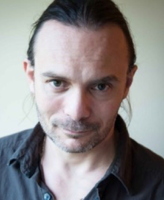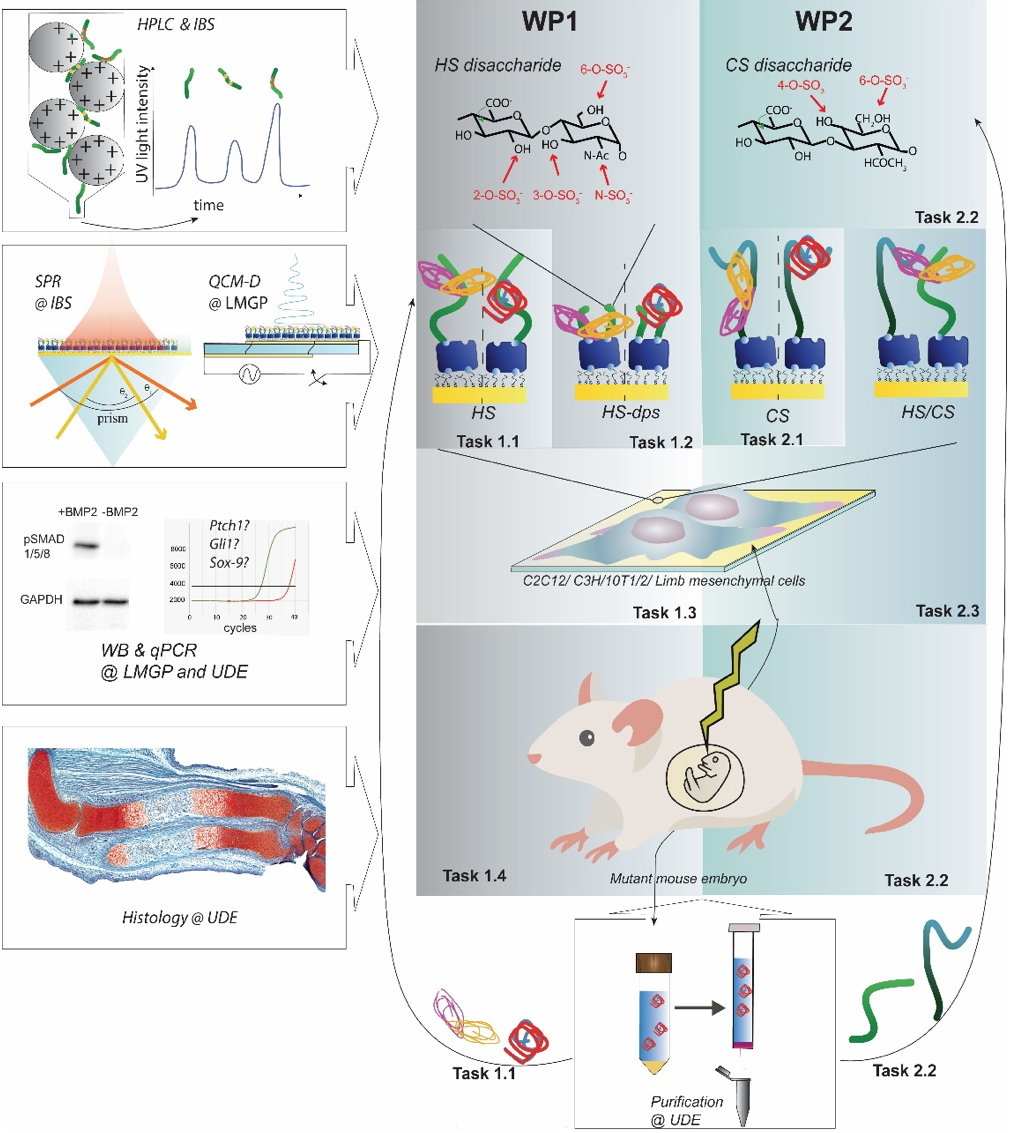
| Dr.
Romain Vivès
CNRS director
Group leader of the SAGAG group at IBS
Grenoble
|
| | |
|
Expert in glycobiology and on structural characterization of GAGs |
 The project
The project During development glycosoaminoglycans (GAG), especially heparan sulfate (HS), act as critical regulators of growth factor signaling like that of bone morphogenetic proteins (BMPs) and Indian hedgehog (Ihh), both regulators of skeletal development. The exact mechanisms by which HS controls signal presentation, distribution and activation are not well understood. Recent studies indicate the existence of a HS sulfation code that is recognized by distinct surface domains of proteins. Besides binding to HS some growth factors also bind to the GAG Chondroitin sulfate (CS), but with lower affinity. In this project we aim to
decipher the specificities of growth factor–GAG interaction using biomimetic platforms presenting immobilized GAGs. These platforms permit to control the relative surface concentration and binding affinities between growth factors and GAGs. The impact of the binding modalities will be tested in in biological systems including cell culture and tissues of mouse mutants.
 WP1
WP1: Investigate the HS structure which determines different affinities for GFs
in vitro and
in vivo on mice mutant
WP2: understand how the relative composition of HS and CS impacts on the bioactivity of growth factors signaling
in vitro and
in vivo?
 People involved in the project
People involved in the project
 PublicationsLearning from BMPs and their biophysical extracellular matrix microenvironment for biomaterial design
PublicationsLearning from BMPs and their biophysical extracellular matrix microenvironment for biomaterial design Elisa Migliorini, Amaris Guevara-Garcia, Corinne Albiges-Rizo, Catherine Picart
BONE, Elsevier, 2020, 141, pp.115540. ⟨
10.1016/j.bone.2020.115540⟩
Heparan sulfate co-immobilized with cRGD ligands and BMP2 on biomimetic platforms promotes BMP2-mediated osteogenic differentiation Julius Sefkow-Werner, Paul Machillot, Adrià Sales, Elaine Castro-Ramirez, Melissa Degardin, Didier Boturyn, Elisabetta Ada Cavalcanti-Adam, Corinne Albiges-Rizo, Catherine Picart, Elisa Migliorini
Acta Biomaterialia, Elsevier, 2020, 114, pp.90-103. ⟨
10.1016/j.actbio.2020.07.015⟩
Chondrocytes respond to an altered heparan sulfate composition with distinct changes of heparan sulfate structure and increased levels of chondroitin sulfate Velina Bachvarova, Tabea Dierker , Jeffrey Esko Daniel Hoffmann , Lena Kjellen , Andrea Vortkamp.
Matrix Biology 2020, 20;S0945-053X(20)30029-9. (
10.1016/j.matbio.2020.03.006)
An altered heparan sulfate structure in the articular cartilage protects against osteoarthritis A.-C. Severmann, K. Jochmann , K. Feller, V. Bachvarova, V. Piombo, R. Stange, T. Holzer, B. Brachvogel, J. Esko, T. Pap, D. Hoffmann, A. Vortkamp
Osteoarthritis and Cartilage 28 (2020) 977e987 (
10.1016/j.joca.2020.04.002)